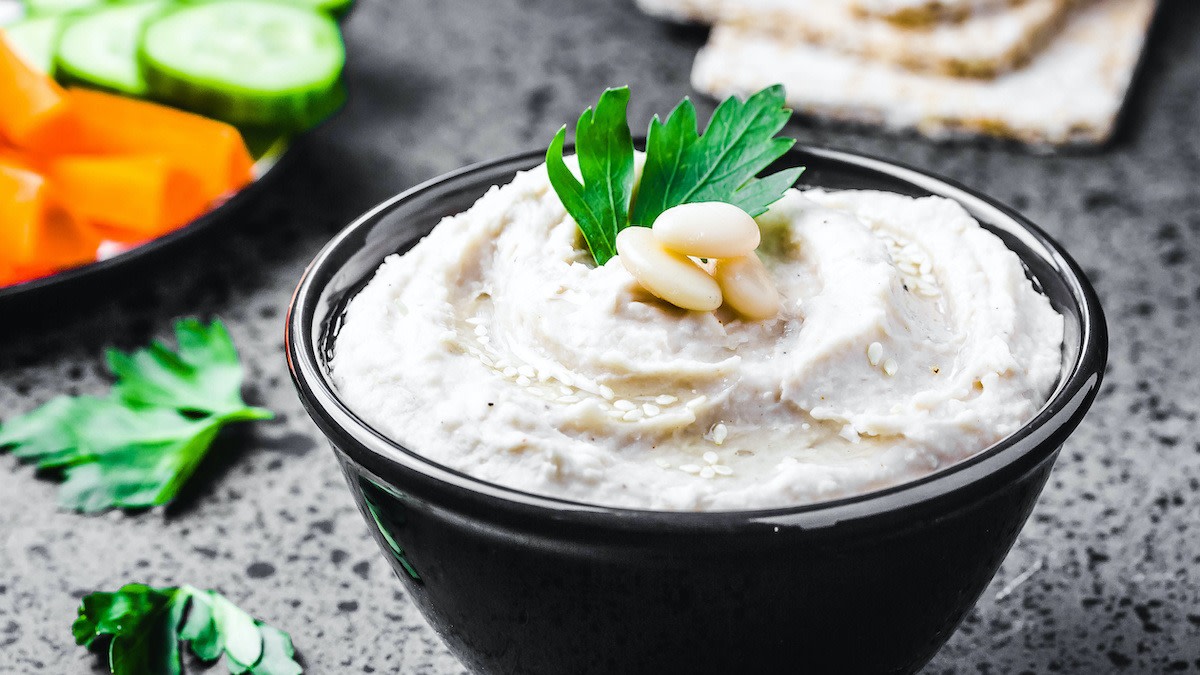Sweet White Bean Paste: 4 Types of White Beans for Shiroa
Written by MasterClass
Last updated: Jan 31, 2022 • 3 min read
Sweet white bean paste is a classic filling for classic wagashi, or Japanese confections. Read on to learn more about recipes that use this unique ingredient.
Learn From the Best
What Is Sweet White Bean Paste?
Sweet white bean paste is a common ingredient in Japanese recipes, especially Japanese sweets. In Japan, the ingredient goes by the name shiroan (also known as shiro-an or shiro an). The paste has a milder bean flavor than sweet red bean paste (or anko), whether the shiroan is a smooth (koshian) or coarse (tsubuan) variety. It’s common to flavor white bean paste with matcha, a green tea powder, or sakura, also known as cherry blossoms—which are edible—for desserts and other dishes.
4 Types of Beans Used for Sweet White Bean Paste
There are a variety of beans chefs use to make white bean paste in classic Japanese cooking. Here are a handful of beans you can use to make sweet white bean paste:
- 1. Butter beans: Featuring thin skins, butter beans (or lima beans) work well for shiroan because they mash into a paste nicely and result in a creamy texture.
- 2. Cannellini beans: A bit on the firm side, cannellini beans (or white kidney beans) are usually easy to find dried or canned, and produce a smooth paste.
- 3. Navy beans: Smaller than most other white beans, navy beans possess a slightly nutty flavor, which results in a white bean paste that complements sweet ingredients well.
- 4. Shirohana mame: A large white bean that thrives in cool climates, such as the Rubeshibe area in Hokkaidō, Japan, shirohana mame is one of the most traditional beans to use for shiroan. The bean’s name means “white flower” or “white flowering bean.”
How to Make Sweet White Bean Paste
Whether you use canned beans or dried beans, white bean paste requires only a few ingredients and steps. Follow these general steps in addition to a white bean paste recipe:
- 1. Prepare the beans. If you’re using dried beans, soak them in water overnight. After eight to twelve hours, the skins should come off the beans easily. If you use canned beans, drain the liquid from the beans. Note that using dried beans produces a flavor closer to the traditional taste of shiroan, but using canned beans can be more convenient since it cuts down the prep time, cooking time, and total time of a white bean paste recipe.
- 2. Cook the beans. This step is not necessary if you use canned beans. If you’re using dried beans, place them in a large pot with just enough cold water to cover the beans. Bring the water to a boil and cook the beans until a foam appears on the surface. Then drain the beans, rinse the pot, and return the beans to the pot with enough water to cover them again. Now simmer the beans, with the lid on, for about one and a half to two hours, or until the beans are tender. Add water as necessary to cover the beans, and stir the pot occasionally to prevent any sticking to the bottom. Alternatively, you can cook the beans in a pressure cooker to cut down the cooking time.
- 3. Make the paste. Push the beans through a fine-mesh strainer with a wooden spatula or spoon to make a smooth paste. Alternatively, use a food processor, adding liquid if necessary to ensure the smoothest paste possible.
- 4. Sweeten the paste. Once the paste is smooth, place it in a saucepan over medium heat or medium-low heat and add white sugar and sea salt. Adjust the amount of sugar in the recipe to suit your personal tastes. The paste will become thinner as the sugar dissolves, so continue cooking the mixture until the moisture evaporates and the paste becomes thick and moldable, about fifteen minutes.
4 Uses for Sweet White Bean Paste
Many of the uses for shiroan are traditional Japanese wagashi, or confections, including:
- 1. Daifuku: This wagashi confectionery is a small amount of mochi (a Japanese rice cake) with a filling of sweet white bean paste. In other versions, the filling is sweet red bean paste from adzuki (or azuki) beans. Sometimes the daifuku contains additional flavoring from green tea powder or dried fruit powders.
- 2. Dorayaki: An enclosed pancake with sweet bean paste inside, dorayaki traditionally uses sweet red bean paste. However, there are versions containing shiroan, which has a milder flavor.
- 3. Manjū: A flour-based pastry, manjū are similar to steamed buns and contain a filling of sweet white bean paste. Other possible fillings include jams and dried fruits.
- 4. Nerikiri: A sweet confection consisting of a glutinous rice flour casing and an interior of shiroan, nerikiri traditionally boast intricate designs that represent the current season.
Want to Learn More About Cooking?
Become a better chef with the MasterClass Annual Membership. Gain access to exclusive video lessons taught by the world’s best, including Niki Nakayama, Gabriela Cámara, Chef Thomas Keller, Yotam Ottolenghi, Dominique Ansel, Gordon Ramsay, Alice Waters, and more.
